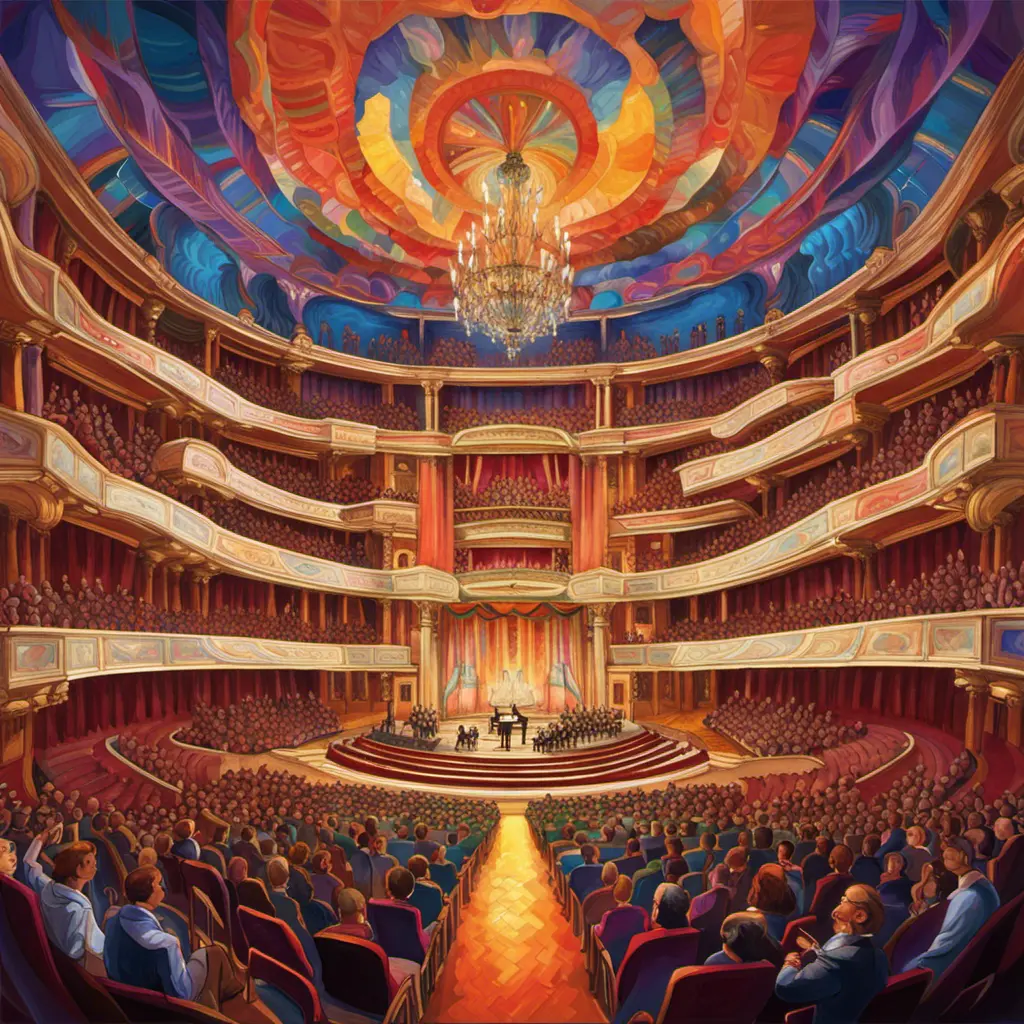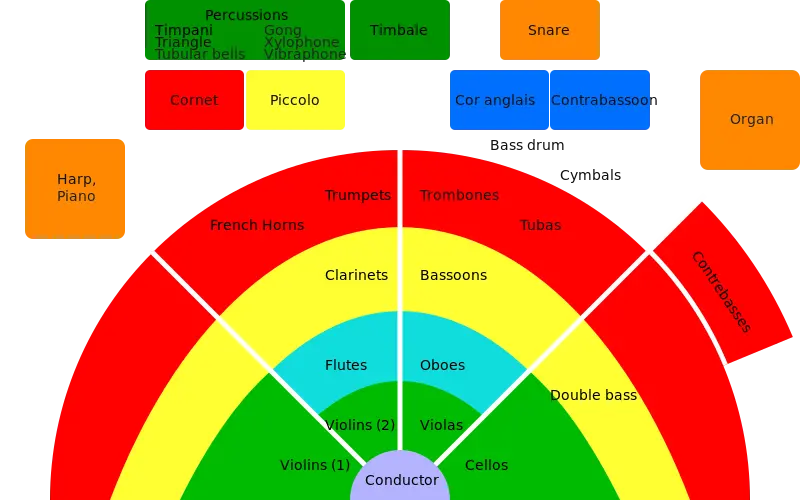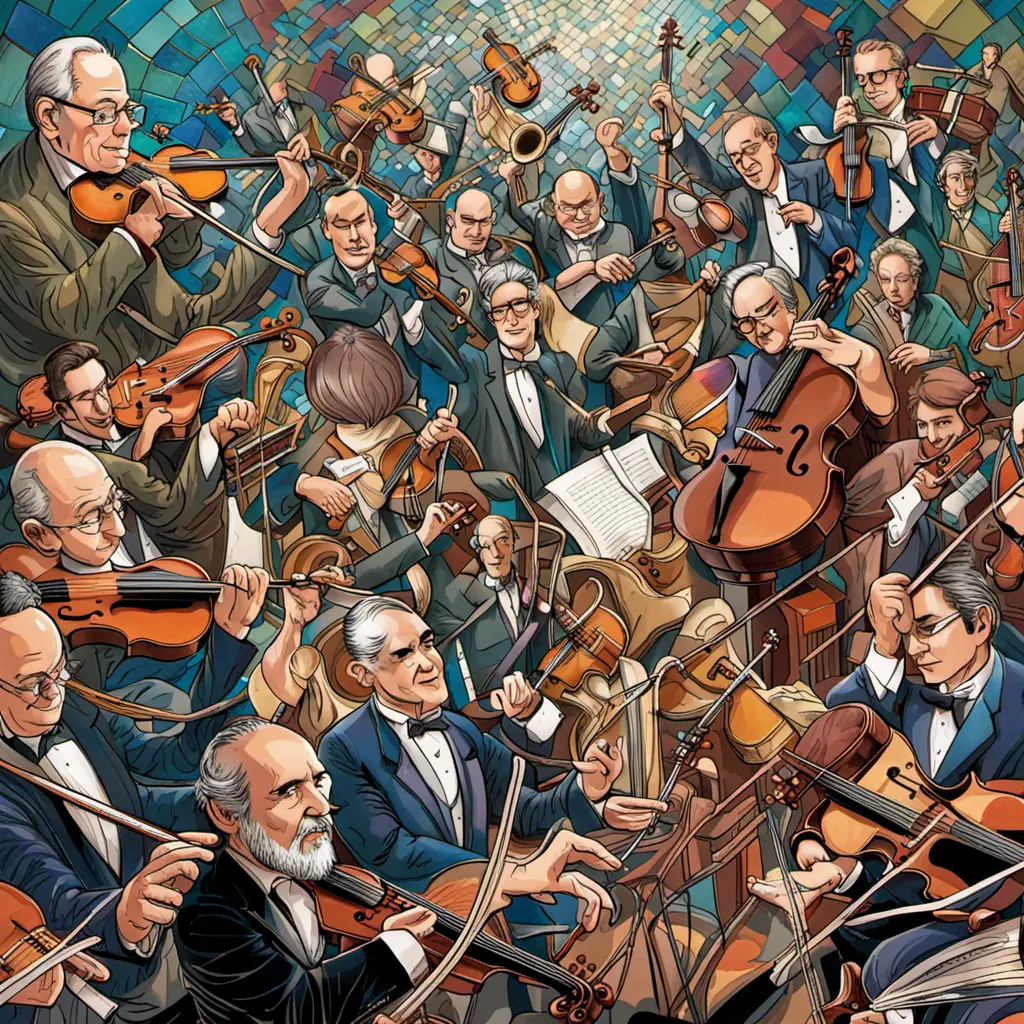The Orchestra: How Does It Work?
Let's learn the ins and outs of how orchestra's work and create it's final product.
Classical music is a far cry from hip-hop and rock music, so many people don't even know what it sounds like anymore. That said, symphonic orchestras are still one of the most expensive and elegant musical events in the world. While most people have seen at least a clip of an orchestra playing, I've realized that many indie artists have no idea how it works.
In this article, I'll explain the fundamental parts of the orchestra and how it all comes together to make beautiful music. What instruments can you expect to find in an orchestra? How is it structured? What is an orchestra in the first place? Let's find out…
Introduction to the Orchestra
The word, orchestra, originally referred to a sitting area reserved for special people. Over time, it has morphed into something else. The orchestra, as it's mostly used, is a group of musicians who are led by a conductor to make instrumental music, usually classical music. There are two main types of orchestras: chamber and symphonic.
The symphonic orchestra is the largest type of orchestra. It usually has at least seventy people, each with their instrument, playing together under the direction of the conductor. It's divided into five instrument sections, each playing its part to create a wonderful symphony, which literally means harmony of sounds. The chamber orchestra is a smaller group usually made up of between twelve and fifteen musicians.
Orchestras have been around since the 18th Century, surviving era after era. You’re probably wondering why the hell anyone is still talking about orchestras or classical music. Orchestras remain a major part of the music industry, and more and more musicians are starting to add elements of classical music to their songs. For example, NF uses a lot of cinematic music that features orchestra-style playing.
As an indie artist, you can decide to do something similar or even more creative with your music. If you’re fully bent on playing punk rock in front of a crowd, this probably isn’t for you, but if you’re looking to learn as much as you can about music to increase your creative potential, this one’s for you.
So how does the orchestra work?

The Arrangement
You’ve probably seen that guy who stands in front of the orchestra waving a stick. That person is called the conductor, and he doesn’t hold the stick only to threaten the musicians into playing the right thing. The stick, usually called a wand or a baton, is used to direct the large group on tempo, timing, and things like that. The conductor is the one we all see pulling the strings, at the head of the army of musicians.
The full orchestra is divided into five sections by instrument type. Each section has a lead chair that leads and plays any solos whenever necessary. Think of it as an army. The conductor is a major and the lead chairs are captains.
Now let’s talk about each section. First, here’s an example of how it could look.

Percussion
Furthest behind, we have the percussion instruments. Not every orchestra has all the listed instruments, but they all have a percussion section. Percussion simply refers to instruments that have to be hit to make a sound. You’ll find drums, xylophones, triangles, cymbals, and such instruments. You’ll find the percussion section in green at the back.
The main role of the percussionists is to set the rhythm for the rest of their counterparts. They may be few compared to other sections, but they’re just as important.
Keyboards
The keyboard section is considered a part of the percussion instruments because they also provide rhythm, but I consider them a subsection on their own. The piano, organ, and harp are all part of this small section. Keyboard instruments aren’t a mainstay of orchestras and aren’t always present on stage during performances.
That said, they can add valuable rhythm and harmony to the music. One of each is usually enough to make their presence felt, so you’ll hardly find plenty of them.
Brass
Next in line is the brass section, made up of instruments like the trumpet, tubas, trombones, and horn. The brass section is quite versatile, able to inject power and volume into the performance, but also able to toe the line with softer tunes as well. Brass instruments are also the best for solos because of their musical flexibility.
If directed properly, the brass section could be the life of the performance. If not, it could also ruin the performance.
Woodwinds
Made up of instruments like flutes, piccolos, oboes, and clarinets, the woodwind section of the orchestra is a special one. It’s hard to hear the individual contribution of the woodwinds, but as soon as they’re out, their absence is evident. One might even say the woodwinds aren’t heard but felt. They add soul and texture to the music. That said, woodwind instruments can also be used for solos.
Strings
The most populated section of the orchestra is the string section. This is where the real magic of the orchestra happens, so much so that the string section has been referred to as the “workhorse�? section. The violin, viola, cello, and bass are all members of this section.
They can deliver soothing tunes, soaring crescendos, and everything in between. All the instruments in this section look and sound alike albeit with some variations, but this section gives the most homogenous sound in the entire orchestra. This is what makes them so powerful despite not being as loud and powerful as the instruments in other sections.
Final Thoughts
If you’re wondering why there’s a massive imbalance in the number of musicians in each section, I can explain. You’ll find that the minority sections are also the furthest behind in the arrangement. This is simply because their instruments are the loudest. Percussion and brass instruments are the loudest of the bunch while the stringed instruments are the softest. This arrangement gives the perfect balance of sounds as they all play.
The orchestra is as fascinating as it’s old, but now you know how it works. You know what an orchestra is and how it’s set up. Next time you watch an orchestra play, you won’t be so clueless about what’s going on. There’s much more to learn about the orchestra, though, and we’ll talk more about it on this blog, so keep your eyes peeled.
Blog Article Tags
symphonic sections musicians classical orchestrasMore Articles
Where To Find Good Indie Music - If you're a long time fan or first time listener of Indie music, we'll show you the best methods for discovering the music you love.
What Kind of Guitar You Should Buy if You Are an Indie Artist - If you're thinking of purchasing a guitar, I help you make the best choice for your budget.
The Evolution of Indie Pop: From Twee to Dream Pop & Beyond - Learn the influence of DIY & indie pop on the development of the pop scene.
The Role of Hip-hop in the Global Music Market - Explore the cultural and historical roots of Hip Hop across the world.
Discover The Exciting French Indie Music Scene - An inspired look into the vibrant and diverse world of independent music in France.


